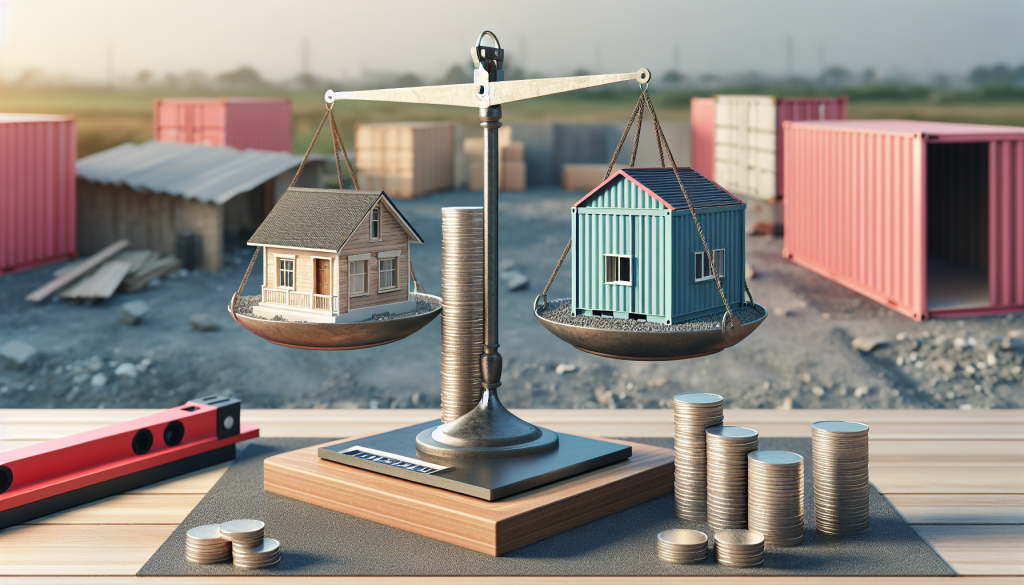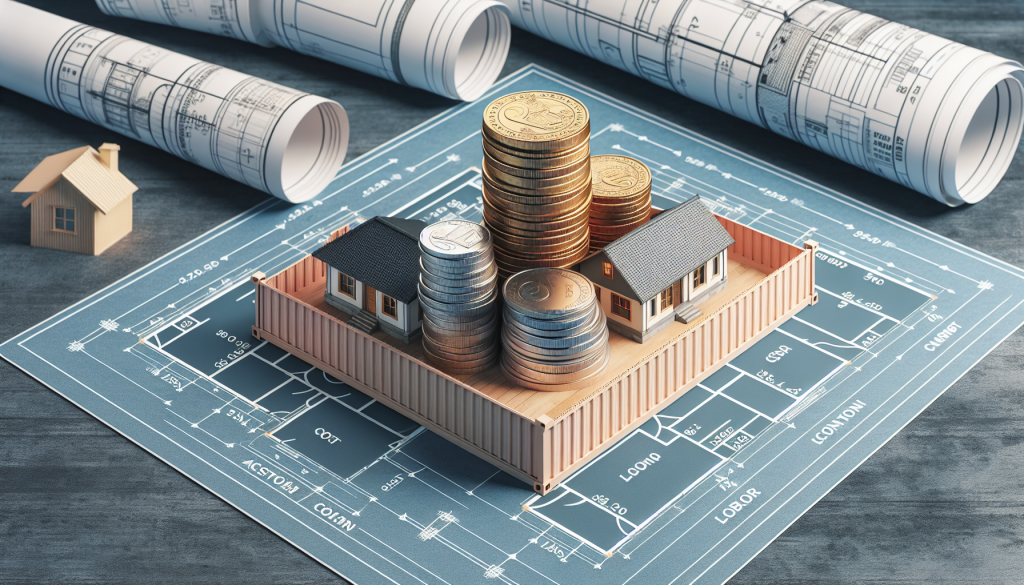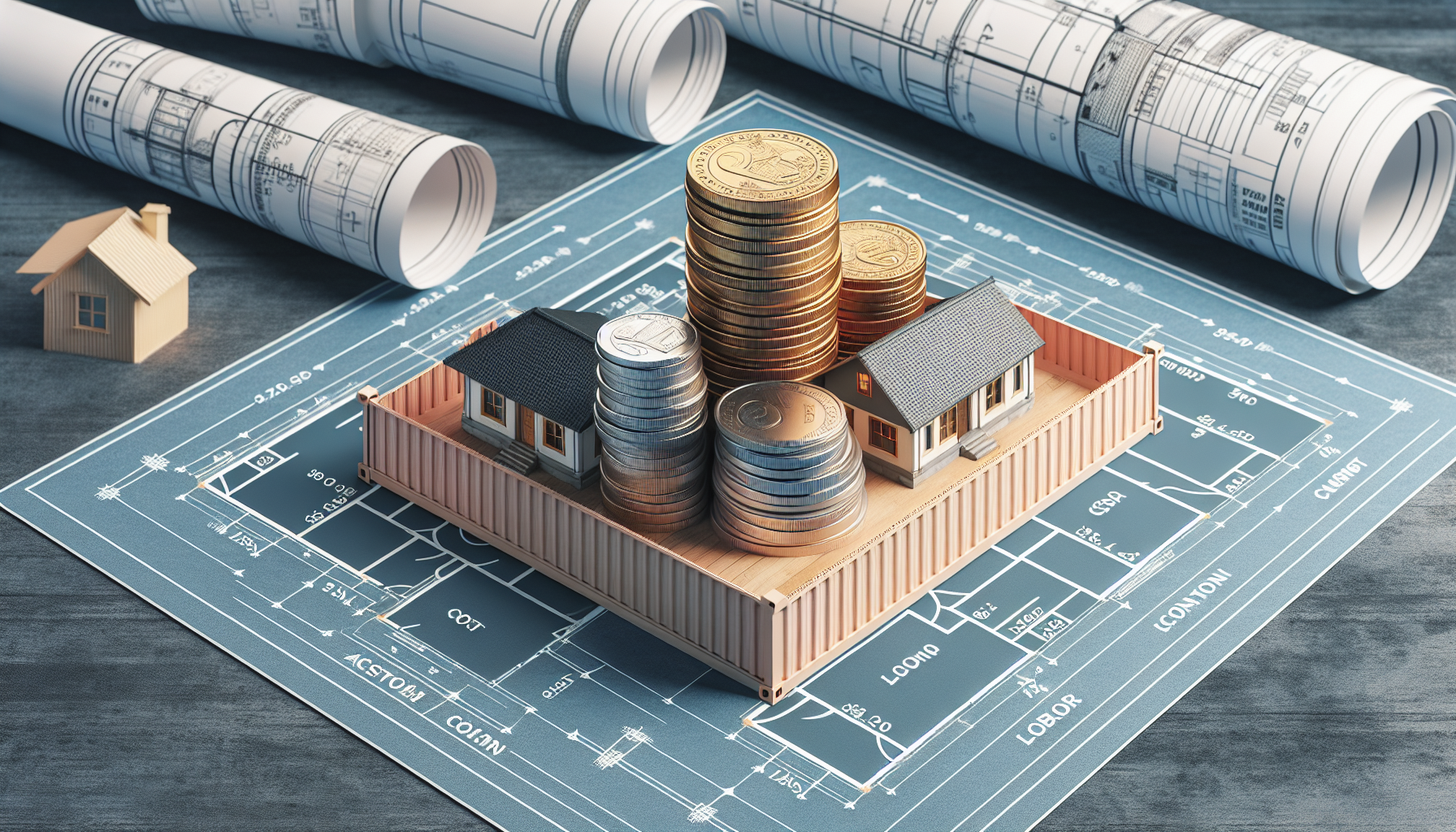Thinking about building your dream home? You might be wondering whether it’s cheaper to go the traditional route and build a house from scratch, or if you should consider the unique option of a container home. Well, you’re in luck! In this article, we’ll explore the costs associated with both construction methods, allowing you to make an informed decision and turn your dream into a reality. So, grab a cup of coffee, sit back, and let’s delve into the fascinating world of home construction economics!
Is It Cheaper To Build A House Or A Container Home?
If you’re considering building your own home, one of the first decisions you’ll need to make is whether to build a traditional house or explore alternative options such as a container home. Both options have their advantages and disadvantages, but one of the most important factors that many people consider is cost. In this article, we will delve into the factors you should consider when deciding between building a house or a container home, including the cost of materials, labor, upfront costs, maintenance costs, energy efficiency, and resale value.
Factors to Consider
Before we delve into the specific costs of building a house versus a container home, let’s first explore the factors you should consider when making this decision. Each option has its own unique set of benefits and drawbacks, and these can vary depending on factors such as location, personal preferences, and budget constraints.
When it comes to building a traditional house, you have the flexibility to design and customize the space according to your needs. You can choose from a variety of architectural styles, materials, and finishes, giving you a sense of pride and accomplishment in creating your dream home. On the other hand, container homes offer a unique and modern aesthetic, often embraced by those looking for a more sustainable and minimalist lifestyle. So, consider your tastes and preferences as you weigh the cost considerations.
Cost of Materials
The cost of materials is a significant factor to consider when deciding between building a house or a container home. Traditional homes typically require a wide range of materials such as bricks, concrete, timber, roofing materials, insulation, and more. These materials can vary in price based on quality, location, and fluctuations in the construction market.
Container homes, on the other hand, are constructed using shipping containers, which are often readily available at a lower cost compared to traditional building materials. However, keep in mind that container homes may require additional materials and modifications to ensure the structural integrity, insulation, and aesthetics. Taking these factors into account, it’s crucial to thoroughly research and calculate the cost of materials for both options before making your decision.

Cost of Labor
Labor costs can make up a significant portion of the total cost of building a house or a container home. Traditional homes generally require skilled tradespeople such as architects, engineers, carpenters, electricians, plumbers, and other specialists to ensure the construction process goes smoothly. The complexity and customization of traditional house construction can often result in higher labor costs compared to container homes.
Container homes, on the other hand, are relatively simpler to construct since they are prefabricated using shipping containers. This simplicity can translate into lower labor costs, as the construction process may require fewer skilled tradespeople and less time to complete. However, keep in mind that if you choose to modify or customize the shipping containers extensively, this could increase the labor costs.
Container Home Costs
Container homes have gained popularity in recent years due to their affordability and sustainability. The cost of a container home can vary depending on several factors such as the size and number of containers used, the level of customization, and the location of your build.
On average, a container home may cost between $20,000 to $150,000, depending on the aforementioned factors. This cost range includes the containers themselves, any modifications or structural reinforcements necessary, interior finishes, insulation, plumbing, electrical work, and other essential components. However, it’s important to note that these costs are estimates, and prices may vary depending on your location, local building codes, and the specific features you desire for your container home.

House Construction Costs
Traditional house construction costs can vary significantly depending on the size, complexity, and quality of finishes you choose. The cost per square foot for building a house can range anywhere from $100 to $400 or more, depending on factors such as location, architectural style, local construction costs, and the level of customization.
When estimating house construction costs, it’s important to consider not only the construction of the structure itself but also the cost of utilities, landscaping, permits, and other associated expenses. A detailed budget and clear understanding of the costs involved are crucial when deciding to build a house, as unexpected expenses can arise during the construction process.
Upfront Costs
When comparing the upfront costs of building a house versus a container home, container homes tend to have a lower price tag. The affordability of container homes makes them an appealing option for those looking to build their own home on a tight budget or seeking a sustainable and affordable housing solution.
However, it’s important to consider the long-term implications of upfront costs. While container homes may initially seem cheaper, they may require ongoing maintenance and modifications to ensure durability and comfort. Additionally, the financing options available for container homes may differ from those for traditional houses. Therefore, it’s crucial to thoroughly research and evaluate your financial situation and preferences before making a decision based solely on upfront costs.
Maintenance Costs
Maintenance costs are an important consideration when deciding between a house and a container home. Traditional houses often require routine maintenance, including regular painting, roof repairs, HVAC system servicing, and other upkeep tasks. These costs can add up over time, depending on the quality of the materials used and the age of the house.
Container homes, on the other hand, may require less maintenance due to their durable and weather-resistant nature. However, it’s important to note that modifications made to the containers, such as cutting openings for windows and doors or adding insulation, may require occasional repairs or replacements. Additionally, container homes may require additional measures to ensure proper ventilation and insulation to maintain a comfortable living environment. Considering these maintenance costs will help you determine the long-term affordability of each option.
Energy Efficiency
Energy efficiency is a growing concern for homeowners, both in terms of environmental sustainability and long-term cost savings. When comparing house construction and container homes, it’s important to consider the energy efficiency of each option.
Traditional houses can be designed and built with energy-efficient features such as high-quality insulation, energy-efficient windows, and energy-saving appliances. These features can reduce energy consumption and lower utility bills over time. However, it’s essential to ensure that your house is properly insulated and designed to optimize energy efficiency.
Container homes, while often incorporating sustainable design principles, may require additional insulation and modifications to achieve optimal energy efficiency. The materials used for insulation, windows, and doors can significantly impact the energy efficiency of a container home. Therefore, it’s important to carefully consider the energy efficiency of each option to make an informed decision.
Resale Value
Resale value is an important consideration if you may need to sell your property in the future or if you view your home as an investment. Traditional houses generally have a higher resale value compared to container homes due to factors such as familiarity, customization, and market demand. The broader market for traditional houses can make it easier to find potential buyers and potentially command a higher price.
Container homes, while gaining popularity, may have a more limited resale market. However, as sustainable and minimalist lifestyles become more widely embraced, container homes may see an increase in demand and resale value. Factors such as the location, design, and condition of the container home can also influence the potential resale value.
Conclusion
In conclusion, when deciding between building a house or a container home, there are several factors you should consider. Both options have their own unique advantages and disadvantages, and ultimately, the decision should align with your personal preferences, budget, and long-term goals. While container homes may offer a lower upfront cost, potential savings, and a sustainable aesthetic, traditional houses provide greater flexibility in terms of design, customization, and resale value. Thoroughly researching and evaluating the cost of materials, labor, upfront costs, maintenance costs, energy efficiency, and resale value will help you make an informed decision that suits your needs and finances.

I am James, the creator behind SeaBoxInnovations.com. Welcome to our premier online destination dedicated to the world of sea containers. Think Inside the Box is our tagline, and our website is your go-to source for exploring the endless potential of these versatile and adaptable containers. Whether you’re interested in purchasing, customizing, or learning about the latest trends in container architecture and design, we have you covered. Join us as we bridge the gap between traditional uses and cutting-edge applications, promoting sustainability and innovation in design and construction. Get ready to embark on your next big project with SeaBoxInnovations.com.

